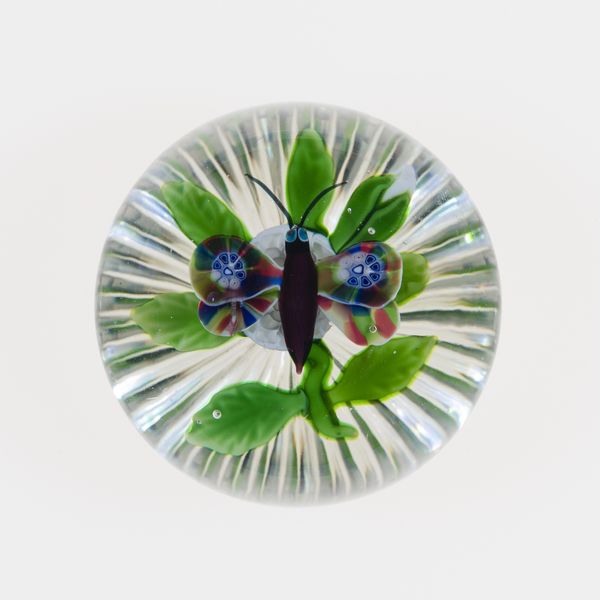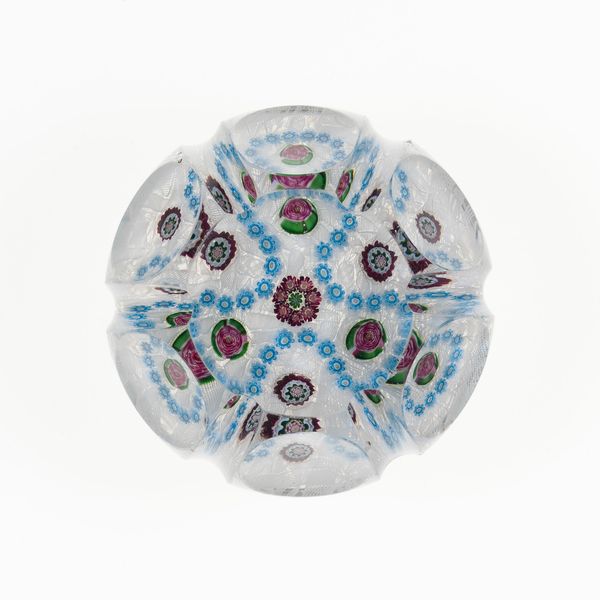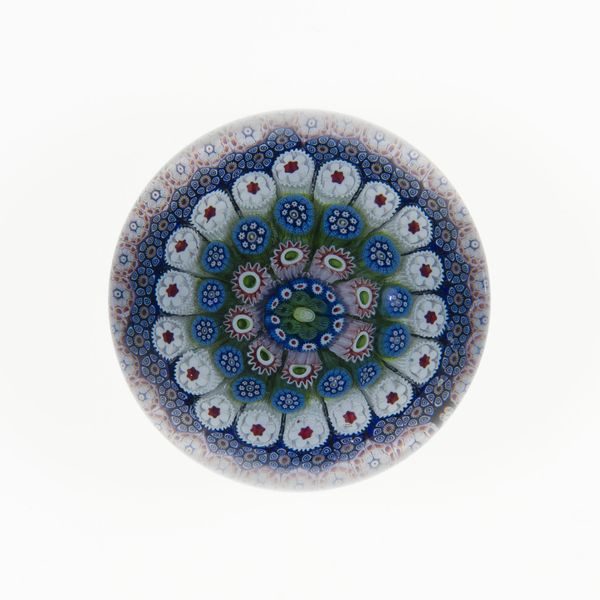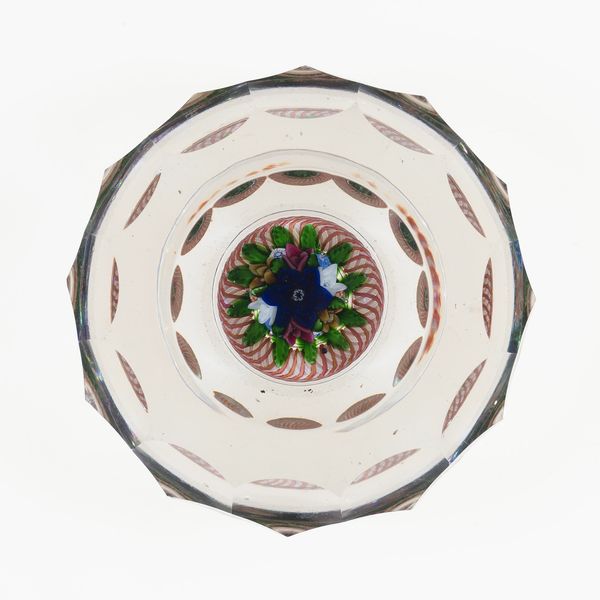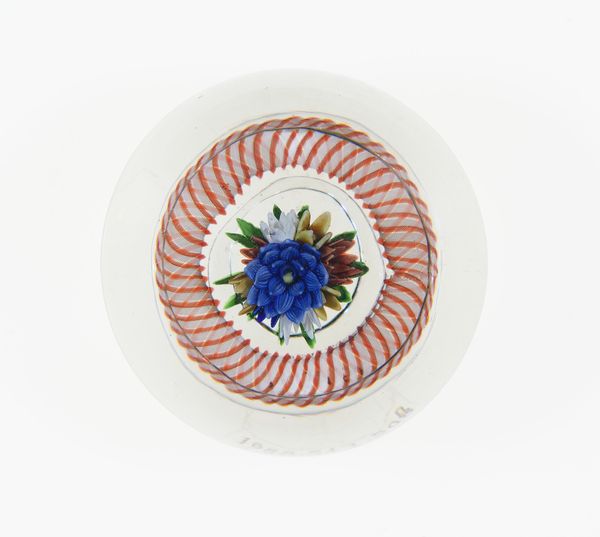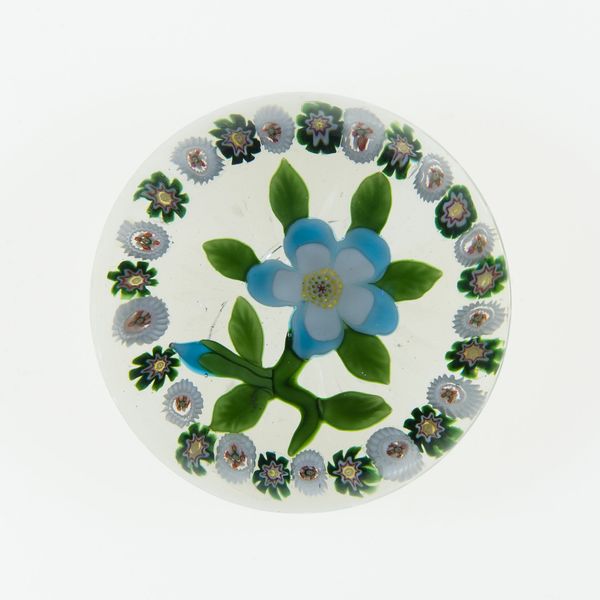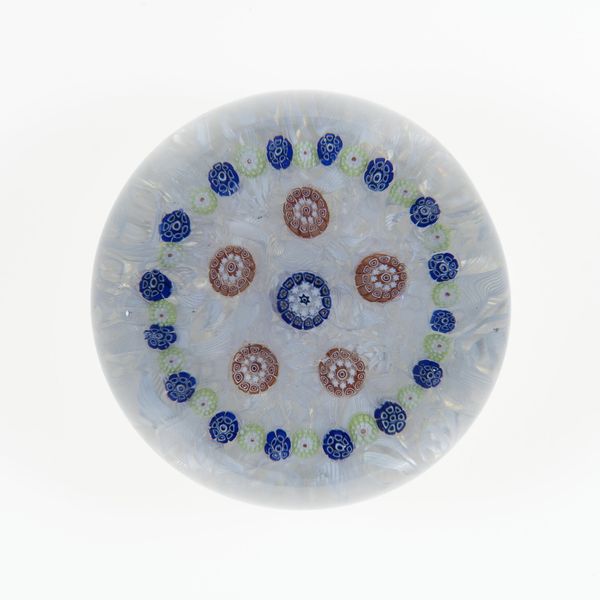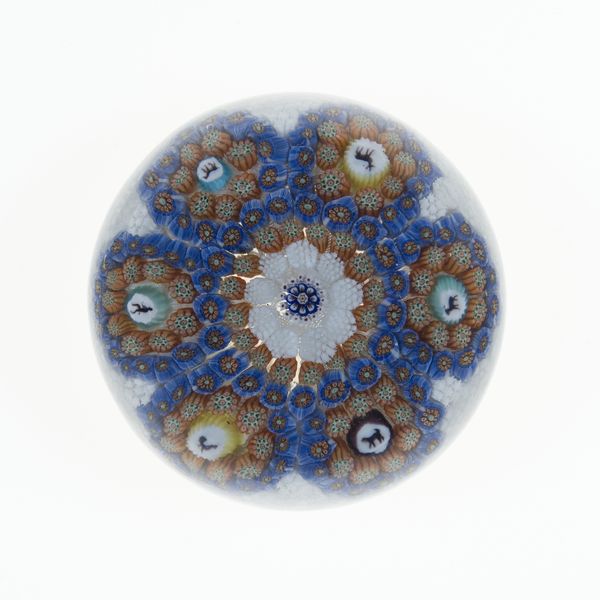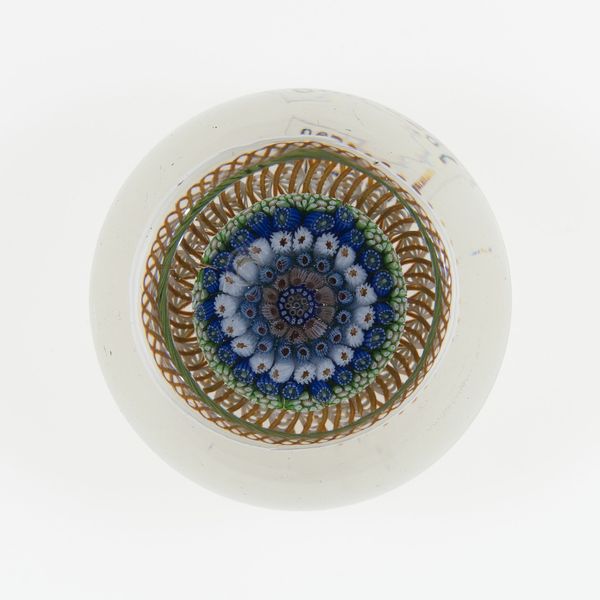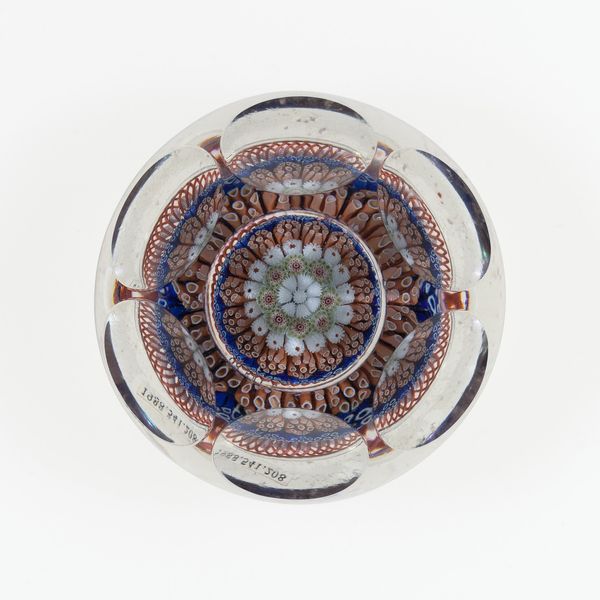
glass
#
glass
#
geometric
#
decorative-art
Dimensions: Diam. 7.6 cm (3 in.)
Copyright: Public Domain
Curator: Oh, how charming. It has a jewel-like quality. Editor: Indeed. We are looking at a glass paperweight, likely made by Baccarat Glassworks sometime between 1845 and 1860. Curator: Such skill went into crafting it. What a testament to the labour behind decorative arts. Do you know more about Baccarat's production practices back then? Editor: Absolutely. Baccarat really innovated in the mid-19th century by adapting industrial processes to produce these highly intricate objects, which were then consumed by an emerging middle class with aspirations toward the finer things. It reflects how objects, even something as simple as a paperweight, serve a broader function in class and social dynamics. Curator: It’s also interesting to consider the chemical composition of the glass, the annealing process, and how each element contributed to the unique properties. I am particularly drawn to how this manipulation transformed mundane materials into objects of fascination. Look at how the colours react and play off one another within a rigid formal structure. Editor: Well, the design does incorporate naturalistic elements within a highly structured format, right? We see that figurative butterfly embedded inside. I think that speaks to the prevailing tastes and interests of the time, reflecting a societal fascination with natural history but within a very controlled, manufactured aesthetic. The very act of encasing the butterfly memorializes both art and science of that period. Curator: I suppose the act of encasing it in glass gives the butterfly permanence it would lack in life. Editor: I hadn't thought of that but it suggests the human desire to control and preserve even that which is ephemeral. This paperweight functions almost like a time capsule, holding values, aesthetic preferences, and also reflecting industrial advances. It really opens a window into the 19th century. Curator: Indeed. Its intricate design provides us with insight into past modes of crafting and what value that type of labour may have held then versus now. Editor: Agreed. There's more here than meets the eye; a beautiful and very complex cultural artifact.
Comments
No comments
Be the first to comment and join the conversation on the ultimate creative platform.
